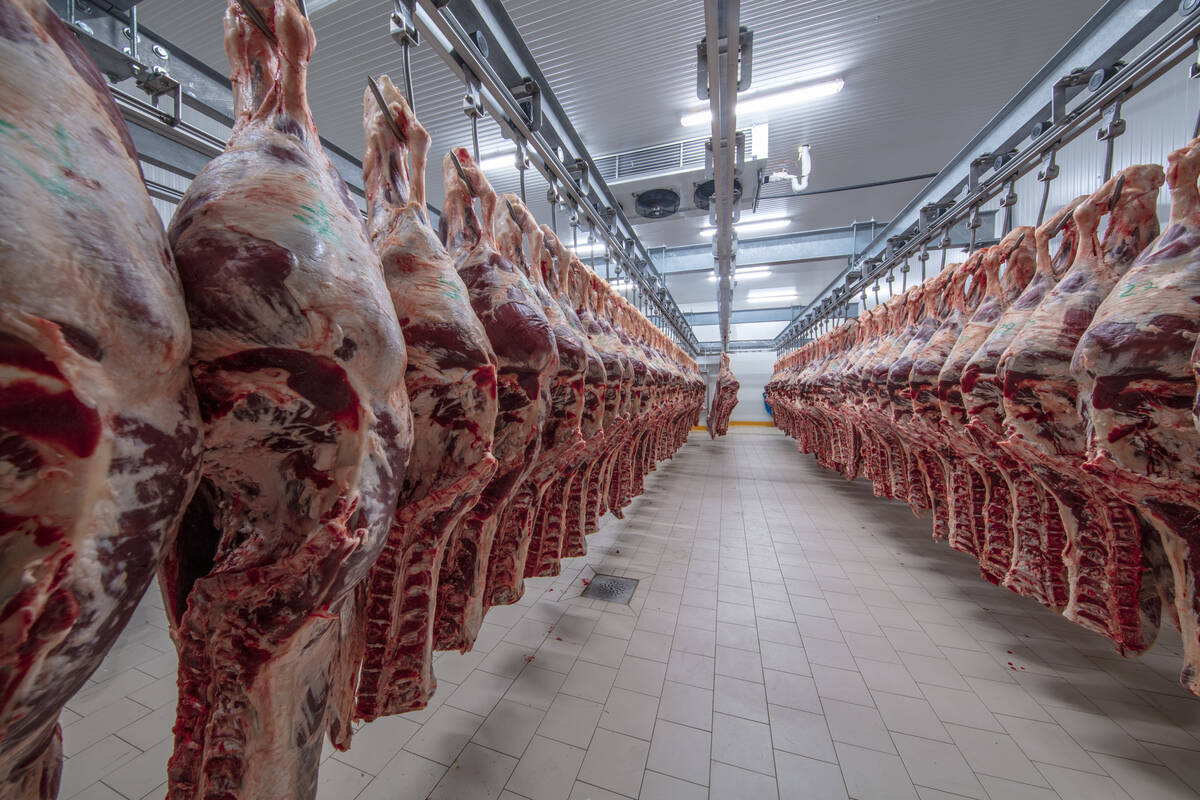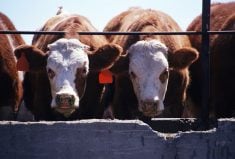Compared to last week, western Canadian yearling markets traded $3-$5 lower while calves and grassers traded within $5 on either side of unchanged. Calves were extremely variable with similar weight cattle sometimes trading $6-$8 apart at the same sale.
Supplies of calves coming on the market appear to be lower than last year. This may be for two main reasons. Lighter calves were placed in finishing feedlots earlier than normal because of limited forage supplies in Western Canada. Secondly, the year-over-year decline in the Canadian calf crop may be lower than anticipated. A large portion of Saskatchewan has received less than 40 per cent of normal precipitation over the past 30 days, but there is no shortage of demand for grass cattle. The most bearish period for fed cattle prices will be the second quarter. We now find feedlots stepping forward more aggressively for mid-weight cattle because they’ll come on the fed market in six to seven months when slaughter prices improve. Premiums were evident on larger-frame calves. Flesh conditions are also coming into play as usual; however, if feedlot operators sensed a light grain or no-grain diet, they were more aggressive to secure ownership. Professional nutritionists can handle these cattle more easily and feedlots want more control based on growth potential.
Read Also

U.S. livestock: Hogs, cattle fall
Chicago Mercantile Exchange livestock futures fell across the board on Wednesday. Most-active February live cattle futures closed at 229.550 cents…
In central Alberta, medium- to larger-frame Charolais blended steers weighing just over 900 lbs. on a 20 per cent barley diet with silage were valued at $177; mixed similar-quality heifers with the same diet weighing 925 lbs. were quoted at $160. In southern Manitoba, medium-flesh black steers averaging 860 lbs. were quoted at $176 while black mixed heifers weighing 875 lbs. reportedly sold for $158.
Calves were very strong across the Prairies. In southern Alberta, tan steers weighing 525 lbs. were valued at $251 delivered to the feedlot and similar-quality heifers averaging 520 lbs. reached up to $210 delivered feedlot. In east-central Alberta, red mixed steers weighing just over 600 lbs. were quoted at $230 while black 610-lb. heifers reportedly dropped the gavel at $192. In central Saskatchewan, larger-frame Charolais steers weighing 725 lbs. were quoted at $206.
The Alberta fed cattle market was quoted at $150-$151 f.o.b. the feedlot last week, unchanged from seven days earlier. Weakness in the fed cattle market is pressuring short-keep cattle and Alberta feedlot margins are expected to hover in red ink from April through June.
— Jerry Klassen manages the Canadian office of Swiss-based grain trader GAP SA Grains and Produits Ltd. and is president and founder of Resilient Capital, specializing in proprietary commodity futures trading and market analysis. Jerry consults with feedlots on risk management and writes a weekly cattle market commentary. He can be reached at 204-504-8339 or via his website at ResilCapital.com.
















